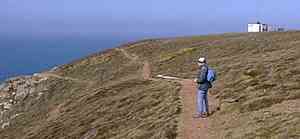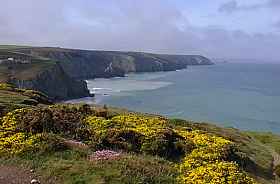
Mike Shellim, May 1997
Soaring from sea cliffs has its own special delights, as I discovered during a holiday in Cornwall, UK in April 1997. |
 |
 |
Above: St Agnes Head Sea and spring flowers provide a perfect backdrop for flying. |
Above: coast near Newquay Cornwall has coastal sites suitable for every wind direction. With a small model, you can do a bit of walking as well. Other attractions include Trinity Lighthouse and Goonhilly Earth Station Photo at right was taken at Lizard Point, Englands Southern-most tip. |
|
Top Five Cliff Soaring Tips
|
| All pages copyright © M. Shellim except where noted. Pages may not be copied without express permission (except for private personal use only). |